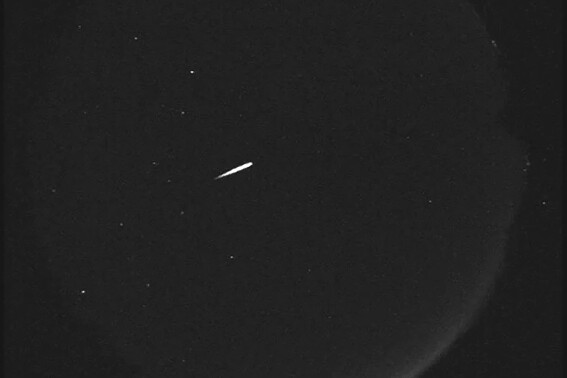We might be looking for life on Mars in the wrong place, scientists suggest.
Extraterrestrial life is more likely to be lurking in Mars' ice than on its rocky surface, according to a new paper in the journal Communications Earth & Environment.
This is because of the radiation that has been raining down on Mars for millions of years, which would likely have sterilized any exposed Martian microbes.
Earth is protected from much of the harmful radiation from space by its magnetic field, which deflects charged particles from the sun and cosmic rays. Mars, however, does not have a global magnetic field, and also has a very thin atmosphere—about 1 percent the density of Earth's—which provides minimal protection against radiation. The bombardment of radiation can break down complex organic molecules essential for life, making its surface a hard place for life to evolve or survive.
"Unlike Earth, Mars lacks a protective ozone shield, so there is 30 percent more harmful ultraviolet radiation at the surface in comparison with the Earth, making it difficult for potential life to exist at the surface of Mars," study co-author Aditya Khuller, currently a postdoctoral research fellow at NASA's Jet Propulsion Laboratory and soon to be a senior research scientist at the University of Washington's Applied Physics Laboratory, told Newsweek.
The researchers suggest that dusty ice would provide enough shelter from cosmic rays to protect Martian life while still letting enough sunlight in for the microbes to survive. Their models showed that ice at Mars' mid-latitudes could be a prime location for Martian microbes to be hidden.
"The results presented here indicate that radiatively habitable zones exist within exposed mid-latitude ice on Mars at depths ranging from a few centimeters for ice with 0.01–0.1 percent dust, and up to a few meters within cleaner ice," the researchers wrote in the paper.
Specifically, the researchers suggest that this habitable zone could exist at ice depths of between 2 and 15 inches containing 0.01–0.1 percent dust, and at depths of 7 to 10 feet in totally pure ice.
This is because microbes are expected to need somewhat warm temperatures and the presence of some liquid water to sustain life. At these ice depths at Mars' mid-latitudes, these conditions could arise.
"Photosynthesis requires adequate amounts of sunlight and liquid water to occur," Khuller said. "Two previous, independent simulations of dense Martian snow found that melting below the surface can occur in the Martian mid-latitudes today if small amounts of dust (less than 1 percent dust) are present within the snow.
"Dusty ice can melt within, so the overlying ice can protect the shallow subsurface liquid water from evaporating into the dry Martian atmosphere. So, the two key ingredients for photosynthesis can be present within dusty Martian ice exposed at the surface in the mid-latitudes."
Several microbes on Earth live in similar environments beneath the ice, ranging from cyanobacteria to fungi.
"Cyanobacteria have developed appropriate mechanisms to deal with a wide range of temperatures, nutrient deficiency, UV radiation, and desiccation," the researchers wrote. "These communities can persist even if temperatures are above freezing for only a few days per year."
Thus, if exposures of dusty mid-latitude Martian ice are melting below the surface for a fraction of the year as predicted by numerical models, then, like on Earth, microbes such as cyanobacteria could scavenge nutrients from the Martian dust mixed in with the ice, and utilize the small amounts of melt whilst being in a radiatively favorable habitat below the surface," they said.
The researchers hope that these findings could help direct future missions to Mars to the mid-latitudes to investigate if life truly is hidden just below the ice.
"These potential present-day habitats are centimeters to meters below the surface and could be the most easily accessible locations to find extant life on Mars via future robotic and human missions," they said.
Do you have a tip on a science story that Newsweek should be covering? Do you have a question about Mars? Let us know via science@newsweek.com.
Reference
Khuller, A. R., Warren, S. G., Christensen, P. R., & Clow, G. D. (2024). Potential for photosynthesis on Mars within snow and ice. Communications Earth & Environment. https://www.nature.com/articles/s43247-024-01730-y
Disclaimer: The copyright of this article belongs to the original author. Reposting this article is solely for the purpose of information dissemination and does not constitute any investment advice. If there is any infringement, please contact us immediately. We will make corrections or deletions as necessary. Thank you.



